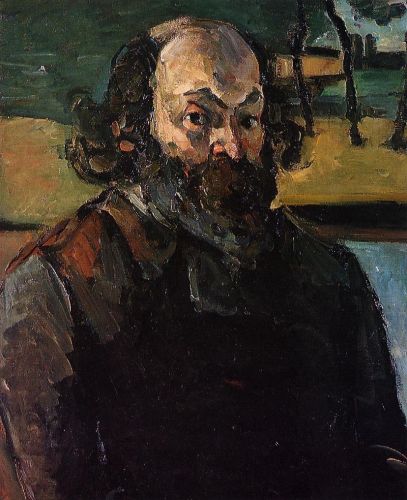| Dark period, Paris, 1861-1870 |
|
 |
Paul Cézanne, (19 January 1839 – 22 October 1906) |
|
Birth name Paul Cézanne
Born 19 January 1839(1839-01-19) Aix-en-Provence
Died 2 October 1906 (aged67) Aix-en-Provence
Nationality French
Movement Post-Impressionism
|
Although he was much involved with Impressionism, Cezanne soon developed a kind of resistance and even reaction against the movement, which he considered lacking of structure. Unlike most of Impressionists, he cared as just for drawing and composition as for painting and for solidity and permanence forms, as he did for tone and colour. He felt the two aspects of painting were inseparable and should not be dissociated. He declared –nature is always the same, but nothing remains of what actually appears us in nature”. Cezanne was a slow worker; he kept going back to his picture, sometimes after an interval of several years, so as to capture not merely the appearance but the very essence of things. His work does not merely seek to convey the passing moment, as Impressionism does, but also the past and the future. Cezanne started with a rather subdued and sombre period before he went on to bring colours, as he did later. This first period, which has been called romantic or baroque, goes from about 1861 to 1871. After studying drawing at Aix, Cezanne went to Paris in April 1861, to the Academie Suisse. He spent his time there coping Italian old Masters, and also painted portraits, still lifes and occasional landscapes. All these work are distinguished by the use of heavy thick paint, with strong shadows, often in pure black. The tones are subdued and sombre, with black, grey, brown and Prussian blue predominating, and the odd touch of white, and the odd touch of white. After his contact with Impressionists he got convinced to abandon his heavy technique and began to use stippling, juxtaposition of brushstrokes and the rough surfaces. These years are known as Impressionists period (roughly between 1872 and 1882). The painting A modern Olympia marks the transition from one period to another. He soon came to consider the Impressionist formula a being out of date and needing to be revised according to fundamental principles, where intelligence corrected and modified vision. He sought to –render perspective by colour alone” in his beautiful drawings, watercolours and oil paintings of The Montagne Sainte-Victoire . He tended more and more to cubism. His still life Cezanne suggested the nature and essence of an object by the quality and intensity of his tones and colours, greater or less fluidity, and successive layers of paint. The work of his last ten years (1896-1906) known as his lyrical period confirms Cezanne?s tendency to achieve and even more balanced synthesis between severity of composition and structure, and almost poetic attitude his art becomes less and less spontaneous, showing signs of incipient Cubism in its strictly intellectual approach, and also of Fauvism in its lyrical use of colour and form. (M. Serullaz, Phaidon Encyclopedia of Impessionism, Phaidon, 1978)
|